Bulbs
Flower Basics
Flower Beds & Specialty Gardens
Flower Garden
Garden Furniture
Garden Gnomes
Garden Seeds
Garden Sheds
Garden Statues
Garden Tools & Supplies
Gardening Basics
Green & Organic
Groundcovers & Vines
Growing Annuals
Growing Basil
Growing Beans
Growing Berries
Growing Blueberries
Growing Cactus
Growing Corn
Growing Cotton
Growing Edibles
Growing Flowers
Growing Garlic
Growing Grapes
Growing Grass
Growing Herbs
Growing Jasmine
Growing Mint
Growing Mushrooms
Orchids
Growing Peanuts
Growing Perennials
Growing Plants
Growing Rosemary
Growing Roses
Growing Strawberries
Growing Sunflowers
Growing Thyme
Growing Tomatoes
Growing Tulips
Growing Vegetables
Herb Basics
Herb Garden
Indoor Growing
Landscaping Basics
Landscaping Patios
Landscaping Plants
Landscaping Shrubs
Landscaping Trees
Landscaping Walks & Pathways
Lawn Basics
Lawn Maintenance
Lawn Mowers
Lawn Ornaments
Lawn Planting
Lawn Tools
Outdoor Growing
Overall Landscape Planning
Pests, Weeds & Problems
Plant Basics
Rock Garden
Rose Garden
Shrubs
Soil
Specialty Gardens
Trees
Vegetable Garden
Yard Maintenance
How to Lay Curbing
How to Lay Curbing. Laying curb for street edging or heavy landscaping is generally done by professionals using an extruder machine that molds the concrete into the proper shape. But if you just want to separate walkways or plantings in your garden for definition, stone pavers will do the trick--something you can tackle on your own.

Laying curb for street edging or heavy landscaping is generally done by professionals using an extruder machine that molds the concrete into the proper shape. But if you just want to separate walkways or plantings in your garden for definition, stone pavers will do the trick--something you can tackle on your own.
Things You'll Need
Drawing or plan of area
Layout of area with rope or spray paint
Supply estimate
Gloves
Hose
Edger tool
Shovels
Landscape fabric
Gravel: compacted base materials
Mortarless paver stones
Leveling sand (also called sandlock or polymeric sand)
Professional compacter or roller (optional)
Rake
Broom
Add Landscape Definition with Interlocking Pavers
Spend some time looking at paving layouts and materials. Edging pavers and curb material can be plastic, wood, stone, metal, synthetic wood, bamboo or metal. For a long-lasting solution, stone pavers are a good choice. They won't rot, they come in a lot of colors and they're easy to replace.

Lay out your design using a hose, rope or spray paint. Try to use curves, which are more common in nature than straight lines. Pick a color that enhances your overall scheme--a bricklike material will contrast nicely with a light-colored home.
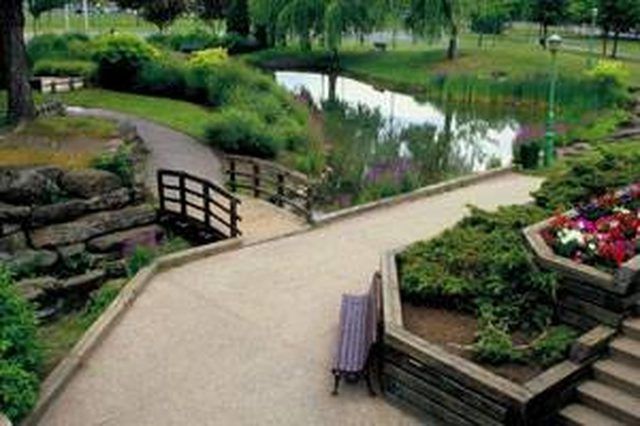
Know how water flows on your property. To avoid puddling, install a higher curb or create a slight slope from the house.
Remove a section of the grass with a sod cutter, edger tool or shovel. Use the width of a stone as a guide and cut deep enough to accommodate gravel and sand.
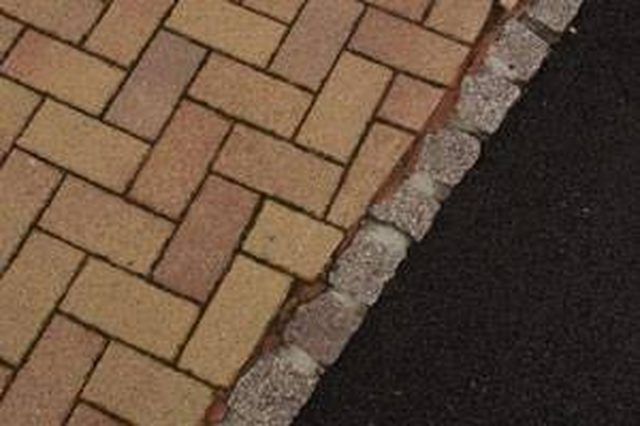
Place landscape fabric over your excavated area to keep weeds from growing.
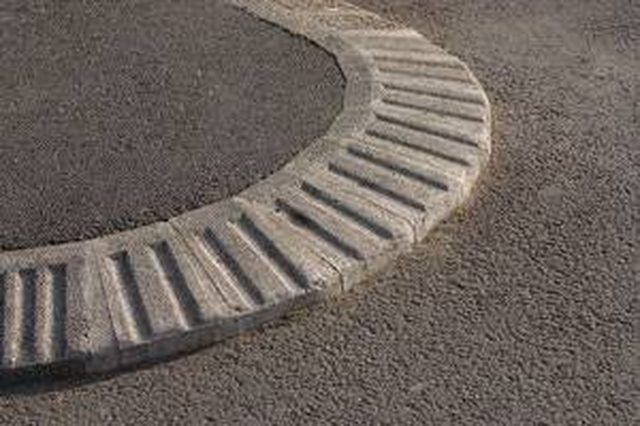
Add a compacted gravel base a few inches deep. Level it with a rake, tamp it down and add 1 inch of sand.
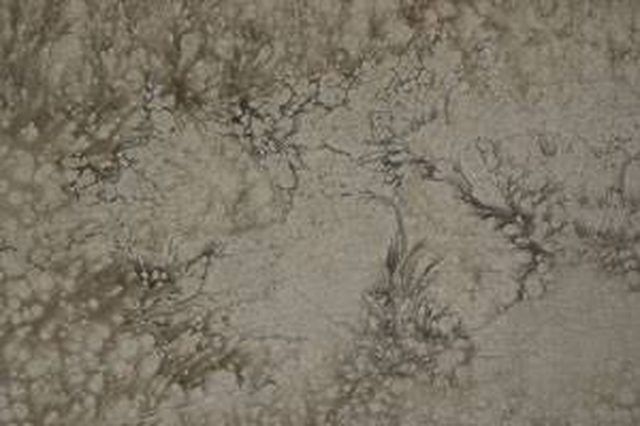
Lay down the paving stones. Shovel sand on top and push it between the stones, then sweep in more sand with a broom. This helps lock the stones together while allowing for normal movement. It also prevents insect and weed penetration. Sweep off the excess.

Finish with a fine water mist to set the sand.
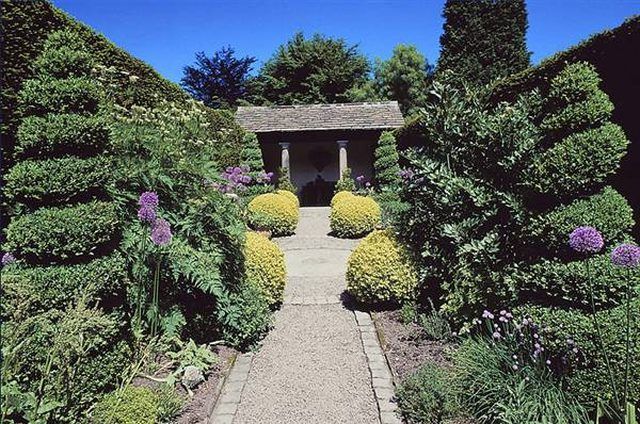
Tips & Warnings
Stone paver colors run from white to burgundy.
• Granite, sandstone and clay pavers cost more than concrete.
• A concrete paving stone can be joined to another to allow for movement---expansion and contraction---without fractures.
• Clean pavers with a broom or a light pressure wash. To remove stains, use the manufacturer's suggested products, a brush and water.
• Dark materials will absorb heat and melt ice and snow faster.
• Use low-growing plants next to the edging. They require less maintenance.
• Use Mow Over Lawn Border (see link below) if you are worried about grass growing too close to pavers.
• Super sand, which is calibrated bonding sand for pavers, has a polymer binder in it and comes in gray or brown.
If utilities need to be accessed, pavers are a good solution. They can be pulled up and replaced.
• Pavers can also be lifted to regrade if water becomes an issue.
• Reapply sand as needed.
• Stone dust is not recommended.